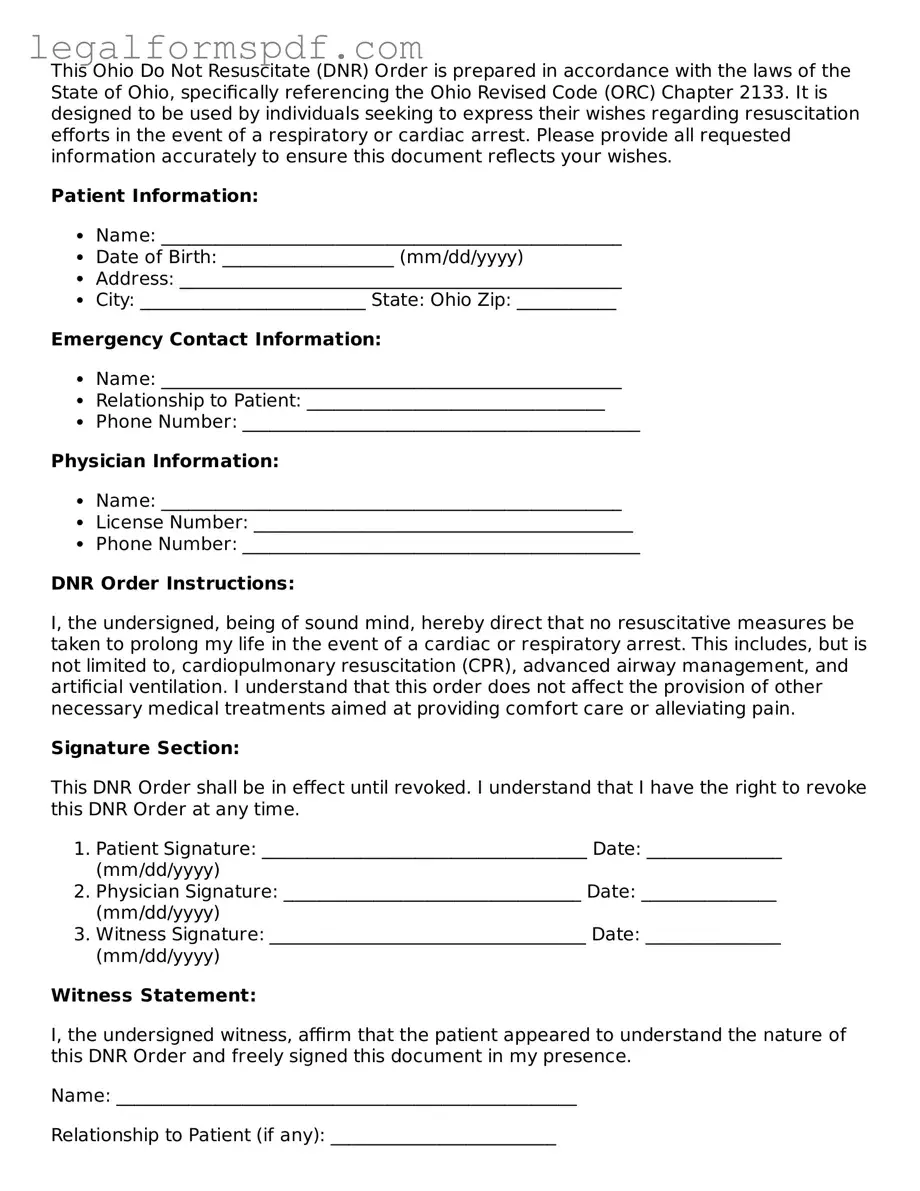What is a Do Not Resuscitate Order in Ohio?
A Do Not Resuscitate (DNR) Order in Ohio is a legal document that tells healthcare providers not to perform cardiopulmonary resuscitation (CPR) if a person's heart stops beating or if they stop breathing. This order is used by individuals who wish to forgo life-sustaining measures in the event of a medical emergency. It's a choice made by the person or their authorized representative, reflecting the person's wishes about their end-of-life care.
How can someone get a DNR Order in Ohio?
To get a DNR Order in Ohio, an individual must discuss their wishes with their healthcare provider. The healthcare provider, whether it's a doctor or an advanced practice nurse, can then fill out the DNR Order form. It's important that this decision reflects the person's wishes, and it should be made after careful consideration and discussion with loved ones and healthcare providers. After the form is completed, it must be signed by the individual (or their authorized representative) and the healthcare provider to become valid.
Who can consent to a DNR Order?
Consent to a DNR Order can be given by the individual themselves if they are of sound mind and over the age of 18. If the individual is unable to make such a decision due to age, condition, or mental capacity, an authorized representative such as a healthcare power of attorney, legal guardian, or family member, depending on state laws, may consent instead. The specifics can vary, so it's essential to consult with a healthcare provider or legal professional to understand who may act as a representative.
Is a DNR Order permanent?
No, a DNR Order is not permanent and can be revoked at any time by the individual or their authorized representative. This revocation can be done verbally or in writing. However, it's crucial to communicate this change to all relevant parties, including healthcare providers and family members, to ensure that the patient's current wishes are respected.
Does a DNR Order affect other treatments?
No, a DNR Order specifically instructs healthcare providers not to perform CPR or advanced cardiac life support if a person’s breathing or heart stops. It does not affect other treatments that a person may receive, such as pain relief, medication, or nutrition. The order is strictly about resuscitation efforts and does not limit other forms of care that might improve the quality of life.
Can a DNR Order be used in any healthcare setting?
Yes, a DNR Order is recognized in all healthcare settings in Ohio, including hospitals, nursing homes, and in the home. It is also recognized by emergency medical personnel. For the order to be effective, especially outside of a hospital, it should be readily accessible to healthcare providers. Some individuals choose to wear a DNR bracelet or carry a card in their wallet to ensure that the order is honored in an emergency.
What should be done with the DNR Order once it's completed?
Once a DNR Order is completed, copies should be given to the individual’s healthcare providers, including their primary care physician, specialists, and any home health agencies involved in their care. A copy should also be kept in a place where it can be easily found in an emergency, such as with personal identification or medical records. Discussing the existence and location of the DNR Order with family members and other caregivers is also crucial to ensure that the individual’s wishes are carried out.
